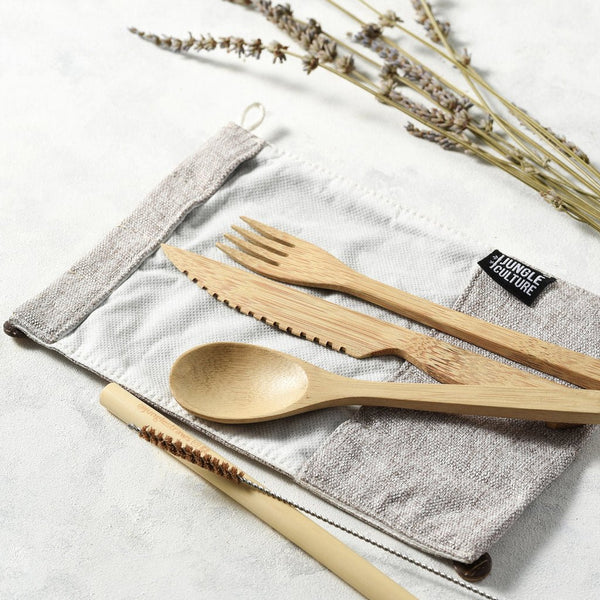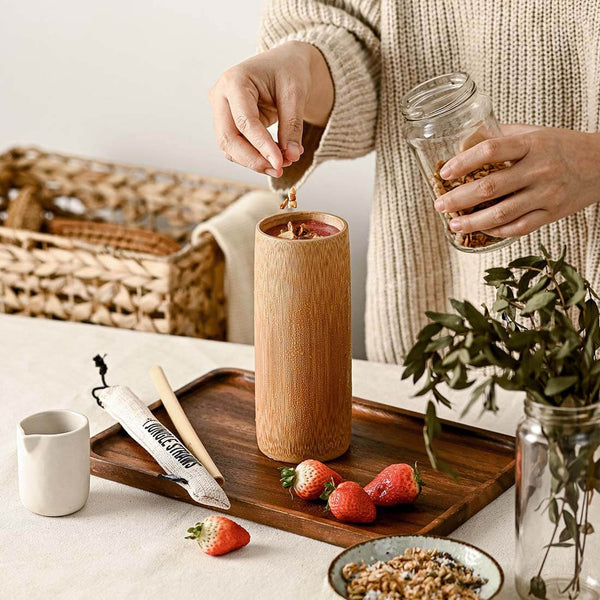The Hidden Costs of Plastic and Eco-Friendly Alternatives Your Wallet Will Love
Every time you toss a plastic container into your trash bin, you're not just throwing away packaging – you're throwing away money. In fact, you're paying three times: once at purchase, again in waste management fees, and a third time in hidden healthcare costs.
Look around your kitchen right now. Count the plastic items you see, from food containers to produce bags and bottle caps to disposable cutlery. Each one represents a choice that impacts not just your wallet but the health of your family and our planet. The truth is, virtually every piece of plastic ever created still exists somewhere on Earth, quietly accumulating costs we're all paying for, whether we realize it or not.
The good news is that you don't have to choose between your wallet and the planet. A new wave of eco-friendly alternatives is proving that sustainable choices can save you money while protecting your health and the environment.
Here are practical, affordable swaps that make both environmental and financial sense. From durable bamboo to innovative coconut-based products and stainless steel options, we'll show you exactly how going green can keep more green in your wallet.
The True Cost of Our Plastic Dependency
When you pick up that plastic water bottle or bag of pre-cut vegetables, the price tag only tells a fraction of the story. The actual cost of plastic stretches far beyond the checkout counter, creating a web of hidden expenses that affect everything from your grocery bill to your medical costs.
Environmental Price Tag
Did you know that every piece of plastic you've ever used is likely still sitting somewhere on Earth? The world generates a mind-boggling 400 million tons of plastic waste annually. In the United States alone, we're the world's biggest plastic polluter, producing twice as much plastic waste as China and more than all European Union countries combined. This isn't just an environmental statistic; it's a cost that shows up in your local taxes, property values, and even tourism revenue in coastal communities.
The Healthcare Connection
That plastic food container might seem convenient, but it could cost you more than you realize in medical bills. Research shows that endocrine-disrupting chemicals (EDCs) in plastics silently impact public health, leading to increased cancer, diabetes, and other endocrine diseases.
In 2018, these health impacts weren't just personal tragedies – they translated to an estimated $250 billion in additional healthcare costs for Americans. That's roughly $750 per person per year in hidden healthcare costs.
The Ocean's Bottom Line
Every year, more than 8 million tonnes of plastic enter our oceans. By 2030, scientists predict there will be more plastic than fish in our oceans if we continue on this path. This isn't just an environmental disaster. It directly impacts the fishing industry, seafood prices, and the livelihoods of coastal communities. When fish stocks decline due to plastic pollution, you see it in higher seafood prices at your local market.
The Recycling Reality
Think recycling is the solution? It’s a positive step, but here's the sobering truth: only 9% of all plastic waste generated globally has been recycled. The rest either sits in landfills, pollutes our environment, or gets incinerated, all processes you pay for through taxes and waste management fees. All that plastic waste ends up in landfills or nature, accumulating costs for future generations.
Eco-Friendly Alternatives That Save Money
Remember when "eco-friendly" meant expensive and inconvenient? Those days are over. Today's sustainable alternatives aren't just better for the planet; they're often more durable, versatile, and cost-effective than their plastic counterparts. Let's explore how switching to sustainable materials can help you save money while upgrading your daily routine.

Bamboo Kitchen Utensils
Imagine never having to replace melted plastic spatulas or scratched-up cooking spoons again. A complete bamboo kitchen utensil set offers everything you need for cooking, from spatulas to mixing spoons, in one sustainable package.
These BPA-free, plastic-free tools are environmentally friendly and superior to plastic alternatives. Unlike plastic utensils that can melt or warp, bamboo utensils maintain their shape and durability over time, making them a one-time investment rather than a recurring expense.
Coconut Bowls
In southern Vietnam, skilled artisans are transforming what was once considered waste into beautiful, functional kitchen pieces. Hand-crafted coconut bowls represent sustainability and style. Each bowl tells a story through unique patterns and shapes, making your dining experience sustainable and artistically meaningful.
These bowls are conversation starters to replace dozens of plastic containers you might otherwise buy and discard.
Stainless Steel Items
Think about how many plastic water bottles you buy in a year. Now multiply that by their cost.
Although a single vacuum-insulated stainless steel water bottle costs $30 upfront, it comes with a lifetime guarantee and keeps your drinks cold for 24 hours or hot for 12 hours. These bottles are made of professional-grade 304 stainless steel and won't retain flavors or develop rust. They're leak-proof and condensation-free, paying for themselves within months of regular use.
Sustainable Self-Care
The bathroom is often overlooked in the sustainability conversation, but it's where some of the most significant impacts and savings can happen. Traditional liquid soaps and shampoos come in plastic bottles that pile up in our landfills.
Instead, consider switching to natural bar soaps enriched with neem, basil, and goat's milk. While shampoo bars are gaining popularity, natural soap bars offer similar benefits while eliminating plastic packaging. These bars often last longer than their liquid counterparts, making them a wise choice environmentally and economically.
Small Changes, Big Impact
Even the smallest swaps can make a difference. Take bamboo straws, for instance. Available in bulk packs, these hand-crafted, reusable straws are 100% organic, biodegradable, and dishwasher-safe. They can be reused hundreds, if not thousands, of times, making them a wise investment for homes and businesses looking to reduce their plastic footprint.
The Economics of Going Green
Let's discuss real numbers and actual savings. While the upfront cost of sustainable products might make you hesitate, understanding the long-term economics reveals a different story.
Breaking Down the Numbers
Take that $30 stainless steel water bottle with its lifetime guarantee. If you typically buy a $1 plastic water bottle each workday, you're spending around $260 annually. Your sustainable investment pays for itself in less than two months. Similarly, a quality bamboo utensil set might cost more initially than plastic alternatives, but you'll never need to replace warped spatulas or melted spoons again.
The Durability Factor
Quality sustainable products often outlast their plastic counterparts many times over. For instance:
A stainless steel lunch box can withstand years of daily use, while plastic containers crack and stain.
Bamboo drinking straws can be reused thousands of times, replacing mountains of single-use plastic.
Natural soap bars last longer than bottled body wash while eliminating plastic packaging waste.
Bamboo kitchen utensil holders organize and protect your tools for years, unlike plastic organizers that can crack and yellow over time.
Business Benefits
For businesses, switching to sustainable alternatives like bulk bamboo straws can improve the bottom line. These products appeal to increasingly environmentally conscious consumers and reduce ongoing supply costs and waste management expenses. The initial investment in reusable items quickly pays off through reduced replacement needs and enhanced brand reputation.
Conclusion
The future of sustainable living goes beyond saving our oceans or reducing greenhouse gas emissions. It is also a smart investment in our health and wealth. As retailers and manufacturers increasingly shift toward sustainable practices, prices for eco-friendly alternatives continue to become more competitive.
Making the switch doesn't require a complete lifestyle overhaul or installing solar panels on your roof. Start small: Replace one plastic item at a time with a sustainable alternative. For example, use natural fiber dish brushes instead of plastic sponges or activated charcoal toothpaste that doesn’t come in a plastic tube. These convenient changes scale up to create a meaningful impact, supporting both workers in sustainable industries and nature itself.
Ready to start your sustainable journey? Begin with one simple swap today.












